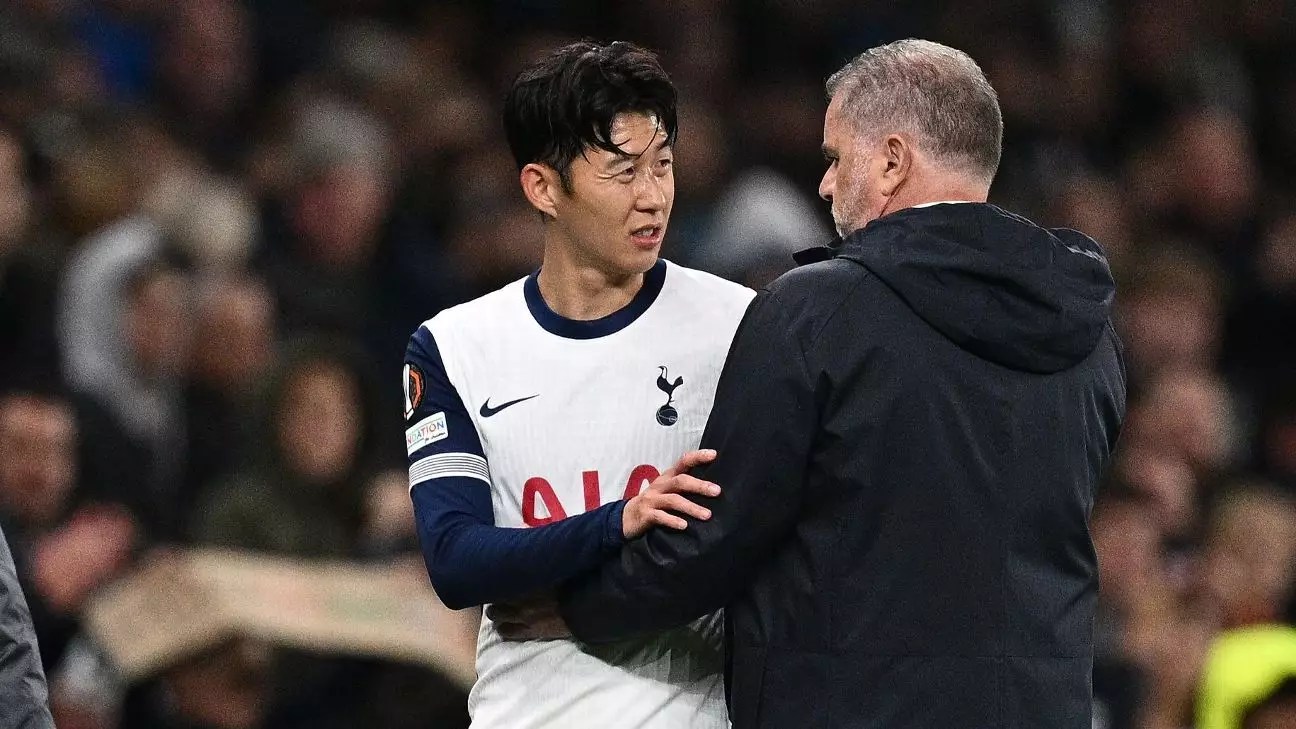In today’s fast-paced world of elite football, players often find themselves navigating an exhausting schedule that some pundits argue creates an unsustainable environment. The case of Tottenham Hotspur’s forward Son Heung-Min serves as a significant example of the challenges faced by athletes balancing club duties and international commitments. As the football calendar grows denser, the scrutiny on how teams manage their players is reaching new heights.
Son Heung-Min, a crucial figure in Tottenham’s lineup and a revered player for South Korea, is currently grappling with physical fatigue. After playing an exhaustive run of matches this season, he was forced to leave the pitch during Spurs’ Europa League clash against Qarabag due to what was later described by his coach, Ange Postecoglou, as “fatigue in his hamstring.” This incident not only raises concerns about Son’s immediate availability for key fixtures, such as the upcoming match against Manchester United, but it also brings to light the overarching issue of player burnout in the modern game.
Despite his prowess and resilience, Son has already featured in all fixtures of the season, including the Carabao Cup. The physical toll this places on a 32-year-old athlete is substantial. Recognizing this, Postecoglou has indicated that such a workload is not sustainable and called for a more thoughtful approach to managing his star player’s minutes. The conundrum lies in striking a balance between Son’s eagerness to contribute and the need for strategic player welfare.
The Dilemma of Fixture Overload
The discussion surrounding fixture congestion is not new, yet it has garnered renewed attention as teams are forced to rely on their star players continuously. The frequency of matches—both domestically and in international competitions—compounds the wear and tear on players’ bodies. For a seasoned player like Son, the increasing number of matches means a higher risk of injury, a concern echoed by the player himself who commented, “sometimes it’s very hard,” citing the “massive” risk of injuries that comes with an overloaded schedule.
Postecoglou’s remarks reflect a growing recognition within football circles of the unsustainable nature of this model. The coach candidly stated that he would ideally like to light a manageable path for Son’s involvement early in the season, but injuries to other key players forced his hand. In acknowledging this reality, he emphasized a need for proactive strategies to protect players amidst the pressures of competitive play.
Ange Postecoglou’s insights extend beyond club strategy and delve into the personal ambitions of players. Son, a player who epitomizes international pride in representing South Korea, faces a dual commitment that many athletes, especially those of his caliber, navigate. Postecoglou firmly believes that asking Son to retire from international play to focus solely on club commitments would be inappropriate. He stated, “I understand how important it is for him” to play for his nation, showcasing his empathetic approach to a player’s career choices.
This perspective underscores the emotional and psychological components of professional sports—where players desire not just trophies but also the sense of fulfillment and legacy that comes from international representation. Balancing club and country becomes a delicate dance, particularly as the player’s age becomes a significant factor. With a limited window for competitive play in an athlete’s lifespan, the desire to seize every opportunity becomes paramount.
The Future of Player Management: Is Change Necessary?
So, what does the future hold for player management in football? The pressures of modern football, coupled with the passion athletes like Son have for the game, suggest that a more systemic change is necessary. Coaches and clubs must engage in proactive discussions about managing player health without defaulting to the narrative of competitiveness that often comes at the expense of well-being.
The sustainability of football as a profession rests upon adapting to the realities that today’s game presents. Ensuring a culture where player welfare is prioritized alongside performance will not only prevent injuries but will also maintain the spectacle of football, allowing fans to witness their favorite players for years to come. The challenge rests on football institutions to recognize that while talent is integral, the health and longevity of players is equally crucial for the beautiful game’s future.


Leave a Reply